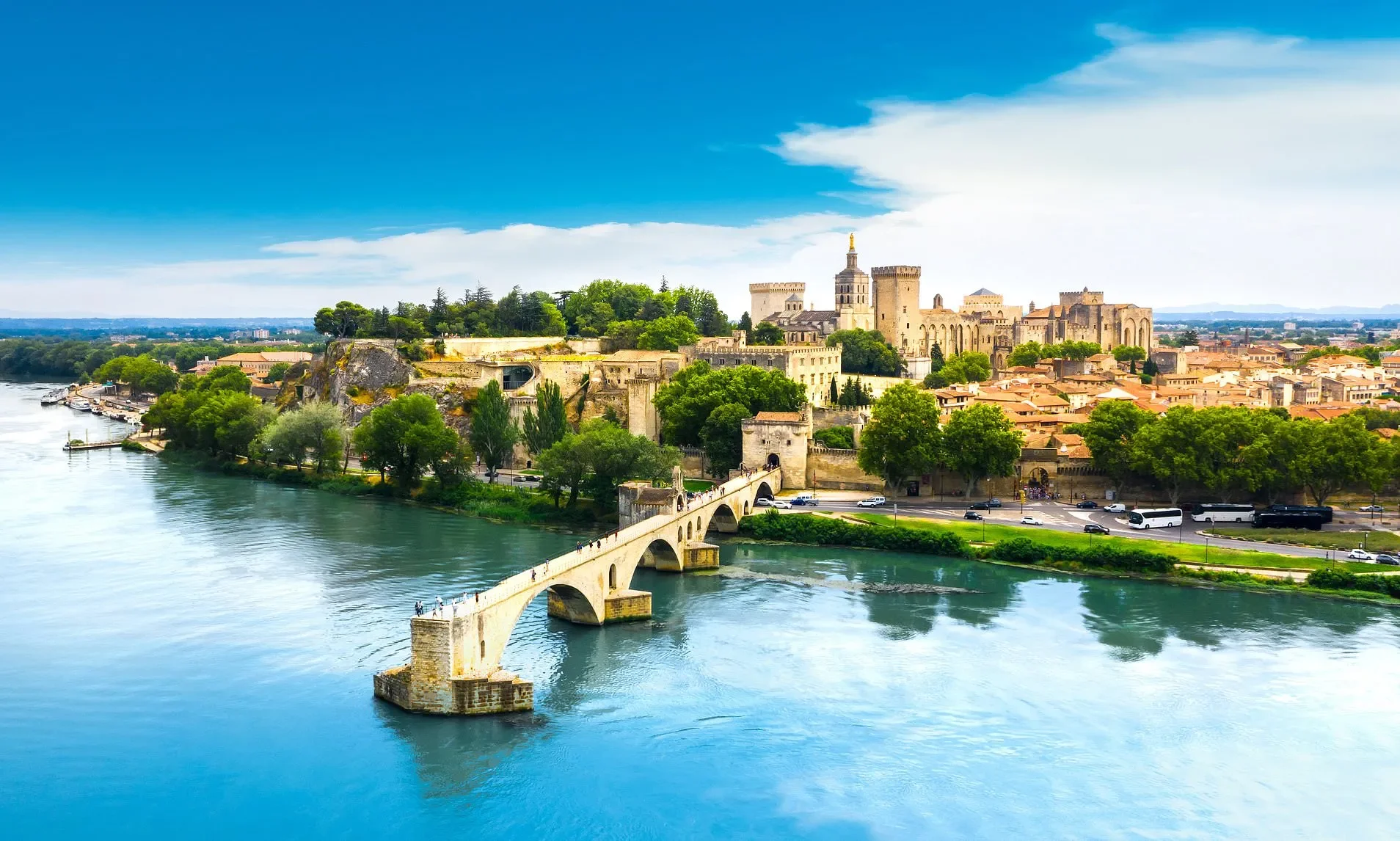A guide to Six Provençal Towns
The South of France is dotted with rolling olive groves, sun-baked stone villages, Roman ruins, and shimmering Mediterranean waters. With so much to see and explore, use these six towns as a starting point for your Provencal adventure. Each one brings something slightly different to the table – here’s how to make the most of them.
Aix-en-Provence
Aix is an elegant and refined town tied to the legacy of Paul Cezanne. It’s a city to walk, sip coffee, and soak up the sophistication of Provence.
Top Things to Do:
Stroll the Cours Mirabeau: This iconic boulevard is shaded by plane trees and lined with cafés, fountains, and charming shops.
Visit the Markets: Aix has daily markets, including the vibrant farmers’ market at Place Richelme and a flower market near the Hôtel de Ville.
Musée Granet: Home to fine painting, sculpture, and some of Cézanne’s influences.
Bastide du Jas de Bouffan: Cézanne’s childhood home, now a historic bastide, makes for a peaceful and intimate visit.
Montagne Sainte-Victoire: For nature lovers, hike or take a short trip to the mountain that inspired many of Cézanne’s masterpieces.
Enjoy Events: If you visit in July, check out the Festival d’Aix (opera and music) and performances at the Grand Théâtre de Provence.
Taste Local Sweets: Don’t miss the calisson, a traditional Aixois confection — Pâtisserie Weibel is a favorite.
Les Baux-de-Provence
High on rocky cliffs in the Alpilles, Lex Baux is where a medieval fortress meets sweeping landscapes.
Top Things to Do:
Château des Baux: Explore the ruins of this medieval fortress. It’s atmospheric and offers sweeping views over the Alpilles.
Carrières de Lumières: In a disused limestone quarry, immersive art shows project images onto massive rock walls, featuring different artists.
Musée d’Histoire et d’Archéologie: Learn about the local history of the region — from prehistoric times through medieval Baux.
Val d’Enfer: Hike the “Valley of Hell,” a dramatic rocky terrain below the village.
Saint-Rémy-de-Provence
This town feels quintessentially Provençal: charming streets, Roman ruins, and strong artistic heritage (think Van Gogh).
Top Things to Do:
Glanum Archaeological Site: Visit the ruins of this ancient Roman and pre-Roman city just outside St-Rémy.
Saint-Paul-de-Mausole: This is the old asylum where Van Gogh stayed, and you can walk through parts of the space that inspired his art.
Bike to Val d’Enfer: The Alpilles make for excellent biking. Routes lead through stunning landscapes to Hell Valley.
Local Market: Wednesdays are especially lively with a market full of artisanal goods and produce.
Cassis
A seaside gem on the Mediterranean. Here you’ll find a charming port, dramatic cliffs, and wine to match.
Top Things to Do:
Wander the Port: The heart of Cassis is its colorful, photogenic port. Great for cafés, people-watching, and gelato.
Markets and Shops: The Cassis market (Wednesday and Friday) is full of local produce, soaps, lavender, and crafts.
Cap Canaille & Corniche des Crêtes: Drive or hike this cliffside road for one of Provence’s most dramatic views.
Beaches: Relax at Plage de la Grande Mer or hike to more secluded calanques like Port-Miou.
Wine Tasting: Cassis is known for its white wine, so visit local vineyards for tastings.
Savonnerie de Cassis: Tour the soap workshop to see how traditional Marseille-style soap is made.
Avignon
A city rich in papal history, medieval architecture, and theatrical energy (hello theatre festival).
Top Things to Do:
Palais des Papes (Palace of the Popes): This is the main draw — explore the palace, its frescoed rooms, and the papal gardens.
Avignon Cathedral (Notre-Dame des Doms): Right next to the palace, with beautiful Romanesque architecture.
Pont d’Avignon (Saint Bénezet Bridge): Walk part of the famous bridge for great views (and photos).
Festival d’Avignon: If you're there in July, don’t miss the festival and its “Off” counterpart — a magical time to feel the city’s artistic soul.
Family-Friendly Tours: The Palais organizes treasure hunts and interactive visits for children using tablets.
Arles
Arles feels like time travel. There’s Roman ruins, Van Gogh inspiration, and the textured soul of Provence.
Top Things to Do:
Arles Amphitheatre (Les Arènes): This Roman arena is hugely impressive and still hosts events today.
Roman Theatre: Just nearby, this ancient theatre offers a quieter but equally evocative experience.
Musée de l’Arles Antique: See archaeological finds, including a Roman boat recovered from the Rhône.
Museon Arlaten: A museum dedicated to Provençal culture and traditions — textiles, folklore, daily life.
Van Gogh Sites: Visit the Rhȏne viewpoint where he painted Starry Night Over the Rhône.
Old Town Walks: Meander through Arles’ narrow medieval streets, enjoying cafés, local shops, and the timeless feel of the city.
Final Travel Tips for Provence
Car vs. Public Transport: A car offers flexibility (especially for Les Baux, Cassis, and St-Rémy), but train + local transport works well for Avignon, Aix, and Arles.
When to Visit: Spring (May–June) or early fall (September) is ideal — fewer crowds, beautiful light, comfortable temperatures.
Stay Central When Possible: In towns like Aix, Avignon, and Arles, staying in the center lets you walk everywhere and genuinely soak up local life.
Book Early: Reserve major attractions (like the Palais des Papes or Carrières de Lumières) in advance if you're traveling in summer.
Pack Smart: Sun protection, comfortable walking shoes, a refillable water bottle, and a camera (or good phone) — you’ll use all of them.
If you enjoyed this content, you’ll love what I send to my email list. On Wednesday’s, you’ll receive destination guides, travel tips, and a little inspiration to help you plan your next trip. Join our list of luxury travelers below, and let’s start planning your next vacation together.







